Paimio 作者: 来源: 发布时间:2021-10-16
一、所属省或是州,具体位置,人口,面积
Paimio is a town and municipality of Finland. It is located in the province of Western Finland and is part of the Southwest Finland region. The municipality has a population of 10,827 (31 January 2019) and covers an area of 242.26 square kilometres (93.54 sq mi) of which 3.89 km2 (1.50 sq mi) is water. The population density is 45.42 inhabitants per square kilometre (117.6/sq mi). The municipality is unilingually Finnish.
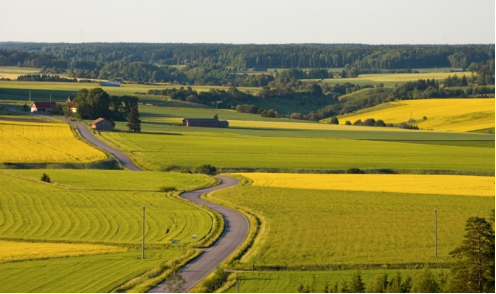
http://www.paimio.fi/
https://fi.wikipedia.org/wiki/Paimio
二、自然地理
1.地理条件
The Paimionjoki River, which flows through Paimio, is the largest of the rivers flowing into the Archipelago Sea, both in its catchment area (1,088 km²) and in its flow. The river flows into Paimionlahti, a narrow, long and deep inland bay. The bay of the bay, ie the northern part into which the Paimionjoki river falls, is a Natura 2000 site of 221 hectares and belongs to it as a special protection area for birds under the Birds Directive. In the national bird water protection program, Paimionlahti is classified as an internationally valuable site. Paimionlahti is a rugged but overgrown coastal meadowcan still be found. The bay is surrounded by forest islands and extensive fields. The bay has abundant nesting birds and is an important resting area during migration.
Along the lower reaches of the Paimionjoki River, north of the center of Paimion, is the Paimionjoki Valley, a river valley in the southwestern agricultural region. The Paimionjoki Valley is a 156-hectare Natura 2000 area and forms the core part of the Paimionjoki Valley's nationally valuable landscape area. The river valley is about seven kilometers long and also houses the Askala hydropower plant, or Askalankoski. There are representative slope meadows in the valley, the most important of which are located at the Askala power plant on both sides of the river. The Paimionjoki Valley was once used for farming, and the vegetation has been greatly affected by long-term grazing. Thanks to grazing, for example, six have not been able to spread, but the landscape has remained open. However, grazing in the area ceased in the 1950s, when the area began to grow closed. In the early 1990s, treatment measures were initiated in the area. The farming landscape of the Paimionjoki Valley is one of the oldest cultural landscapes in Finland.
2.交通情况
When drawing up the current city strategy, the people of Paimi were asked about the areas in which the city would develop its operations. One of the most important wishes of the townspeople was the development of public transport. Development began at the beginning of July 2019 on bus lines 701 - 709 between Turku and Paimio, where reduced ticket prices and value cards were introduced. In the future, the city will invest a considerable amount - up to more than 50,000 euros - in the development of public transport. The amount of the investment will be significantly affected by how much public transport services will be used by the people of Paimio.
http://www.paimio.fi/palvelut/kadut_ja_liikenne/joukkoliikenne
三、经济发展和规模
The Tax rates as of 2020 are 20.75% and the unemployment rate is 4.3% as of 2019.
Paimio has a vibrant business community, for which the relaxed environment of the rural city provides a good framework. The companies that generate the most turnover are Ansion Sementtivalimo Oy, which manufactures concrete products, and Electric Power Finland Oy, which does electrical work. The city's largest employers are the asphalt station manufacturer Amomatic Oy and Electric Power Finland Oy.
http://www.paimio.fi/sv/statistik
https://www.finder.fi/kunta/Paimio
四、产业特点/重点项目
There are two operating hydropower plants in the Paimio area, the Juntola and Askala power plants. Askalankoski is a cultural and natural site with a traditional landscape maintained by the environmental association. The city also houses the Bio Stara cinema, the Paimio Electricity Museum and the Miila Handicraft Museum.
The town has about 1274 companies operating there, and 134 of these companies are operating farms.
https://fi.wikipedia.org/wiki/Paimio
五、风景名胜,景点( attractions)
1. Paimio Sanatorium
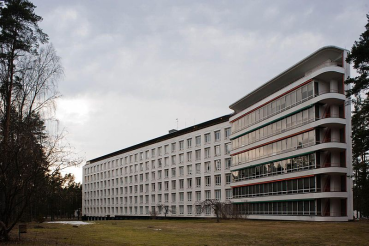
Paimio Sanatorium is a tuberculosis sanatorium designed by Alvar and Aino Aalto in Paimio, Southwest Finland, in 1929–1933. The building is considered to be the main work of Aalto's early functionalist period. The building is owned by the Hospital District of Southwest Finland.
The architects' starting point when designing the sanatorium was that the building itself would function as one of the healing elements. Alvar Aalto called the building a “medical instrument”. It combines a new type of sanatorium building with a breakthrough in modern architecture. The potential of the new architecture was used for standardization and hygiene; the architect combined artistic creativity and a human approach to these. In addition to the building, Aalto also designed the interior of the hospital. Many of the furniture still in production at Artek, such as the Paimio armchair, were originally designed for sanatorium use.
The hospital operated exclusively as a tuberculosis clinic until the 1960s. After that, the building served as part of the Turku University Central Hospital as the Lung and Internal Medicine Hospital of the Hospital District of Southwest Finland. In 2014, the Mannerheim League for Child Welfare 's Children and Youth Rehabilitation Foundation became a user, but the building is partially deserted.
The hospital is one of the nationally significant built cultural environments in Finland defined by the National Board of Antiquities. Finland is considering proposing a sanatorium as a UNESCO World Heritage Site, but so far no proposal has been prepared. In addition to the hospital, the area includes residential buildings, its own water pumping station and a treatment plant with its surroundings.
https://fi.wikipedia.org/wiki/Paimion_parantola
2. St. Michael's Church (Paimio)
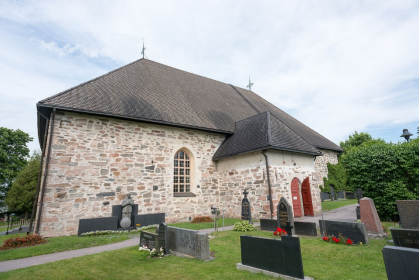
St. Michael's Church is the church of the Paimio parish in Paimio in Southwest Finland. It is torniton, a single nave gray stone of long church, which was built in the village vista 1681-1689. The church is one of two churches in the Paimio area. The other is the Church of St. James in Hevonpää, Paimio.
The body of the Church at the long sides extending from the northern end of the vestry, the southern end is the armory. The exterior roofs of the building have high gable ceilings, there are folding ceilings inside. The windows and some of the doors are tapered. Originally a wide church hall, it was probably designed for three ships. The church was renovated in 1750, 1863 and 1904 and in 1974, it was restored in 1952. The church covers an area of 886 square meters and has seating for 800 people.
The Church inaugurated on Christmas Eve 1689 Juhana Gezelius younger. The original vaulted board vault was converted into a neo-Gothic fold roof in 1863 according to the plan of the provincial architect Pehr Johan Gylich. Electricity was installed in the church in the mid-1920s and the fireplace was switched to central heating in the 1960s. The interior painting in 18th-century tones was done during the renovation. Archbishop Martti Simojoki rededicated the renovated church as an Epiphany in 1975. At the same time, the Paimio parish celebrated its 650th anniversary. The church has Armfelt and Gisselgorss (1995) and von Cräutlein(1999) coat of arms of noble families, drawn by herald Reijo Helläkoski. The coat of arms of the family Jägerhorn af Spurila has been in the church before, as a monument to those buried there.
https://fi.wikipedia.org/wiki/Pyh%C3%A4n_Mikaelin_kirkko_(Paimio)
3. Paimio railway station
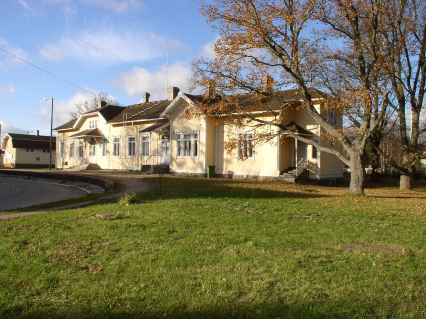
Paimio Railway Station (abbreviated as Po, Swedish: Pemars järnvägsstation) is a coastal railway station located in the village of Vista in the town of Paimio. It is 10 km from Piikkiö Train Station and 29 km from Salo Train Station. The station has not had regular passenger traffic since 1988. The station currently serves as a meeting place for trains, and rail traffic control is handled centrally from Helsinki.
The station building was designed by Bruno Granholm. The station was opened in 1899 and expanded in 1916. There was a kiosk between the cargo warehouse and the station building. In the yard there was a log water tower and a one-story locomotive garage. The old turntable was moved to the area in 1930.
The station building left over from rail traffic is used by the local Pentecostal church. The station building with its surroundings, located on the northern edge of Paimio city center, at the confluence of the Paimionjoki and Vähäjoki rivers, is one of the nationally significant built cultural environments defined by the National Board of Antiquities. At the end of Paimio railway station, in the direction of Turku, was the Paimio level crossing with booms, which has been replaced by the Vistantie underpass.
https://fi.wikipedia.org/wiki/Paimion_rautatieasema
六、历史文化
1.历史
A large number of bronze and Iron Age relics are known from the Paimio. In 2009, news was provided nationwide about a 3,500-year-old bronze ax found in Paimio, which is preserved in the Paimio Homeland Museum.
In the Iron Age, agriculture was already well established as a livelihood alongside hunting. Agriculture required a more established lifestyle, perhaps there was a need to defend our own lands, so there had to be places of reconnaissance and defense. Such are perhaps the so-called castle mountains, known from the Paimio area 5. During the 1500 years of the Iron Age, several burial methods were also in use, 11 separate cemetery areas are known from the Paimio area, representing the customs used throughout the period. Memories of the Iron Age in the terrain also include sacrificial stones, or cupstones known from Paimio 2. These cupstones are usually large earth stones or rock outcrops with 1 or more small recesses or cups engraved on them.
In the Middle Ages, the area was influenced by the Pora (Spore) family, whose supposed pole- coat family coat of arms has given rise to the coat of arms of the city of Paimio, and the Jägerhorn af Spurila family. There were already many manors in Paimio in the Middle Ages, including the Hevonpää (now Viksberg) and Spurila manors.
Askalankoskella has been from the 1930s until the hydroelectric power station. Electricity is also one of Paimio's major industries and the area has had electricity distribution, factories and installation facilities. Trains between Turku and Helsinki have previously stopped in Paimio.
http://www.paimio.fi/sv
2. 文化体育
Paimio has two churches, St. Michael's Church in the center and the St. Jacob's Church Paimion Gulf beach Hevonpäässä.
There are two operating hydropower plants in the Paimio area, the Juntola and Askala power plants. Askalankoski is a cultural and natural site with a traditional landscape maintained by the environmental association. The city also houses the Bio Stara cinema, the Paimio Electricity Museum and the Miila Handicraft Museum.
In Kaleva, Paimio, there is also the Livia Rural College, where the fields of study are animal husbandry and forestry.
http://www.paimio.fi/tietoa_paimiosta
七、其他信息
Concerts are held in the Paimiosali and the church, and exhibitions are held in the exhibition hall of the town hall.
At the end of June, a diverse River Park Festival is celebrated in Jokipuisto on Sahurintie. The 2020 River Park event has been canceled due to the corona pandemic!
In August, a rowing event for the two bridges will be held in the river park, and on the last Sunday, the joint open day of the provincial museums will be celebrated as the Museum Day of Southwest Finland.
On the first Sunday of September, you can visit the Sukselan rural market Christmas mood can be reached, for example, in November at City Hall and its surroundings organized the Christmas market and Sukselan Christmas markets.
http://www.paimio.fi/palvelut/kulttuuri/tapahtumat
八、联系方式
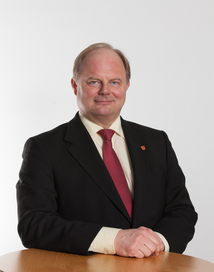
Mayor: Jari Jussinmäki
Telephone: (02) 474 5300
Email: firstname.lastname(at)Paimio.fi
http://www.paimio.fi/
